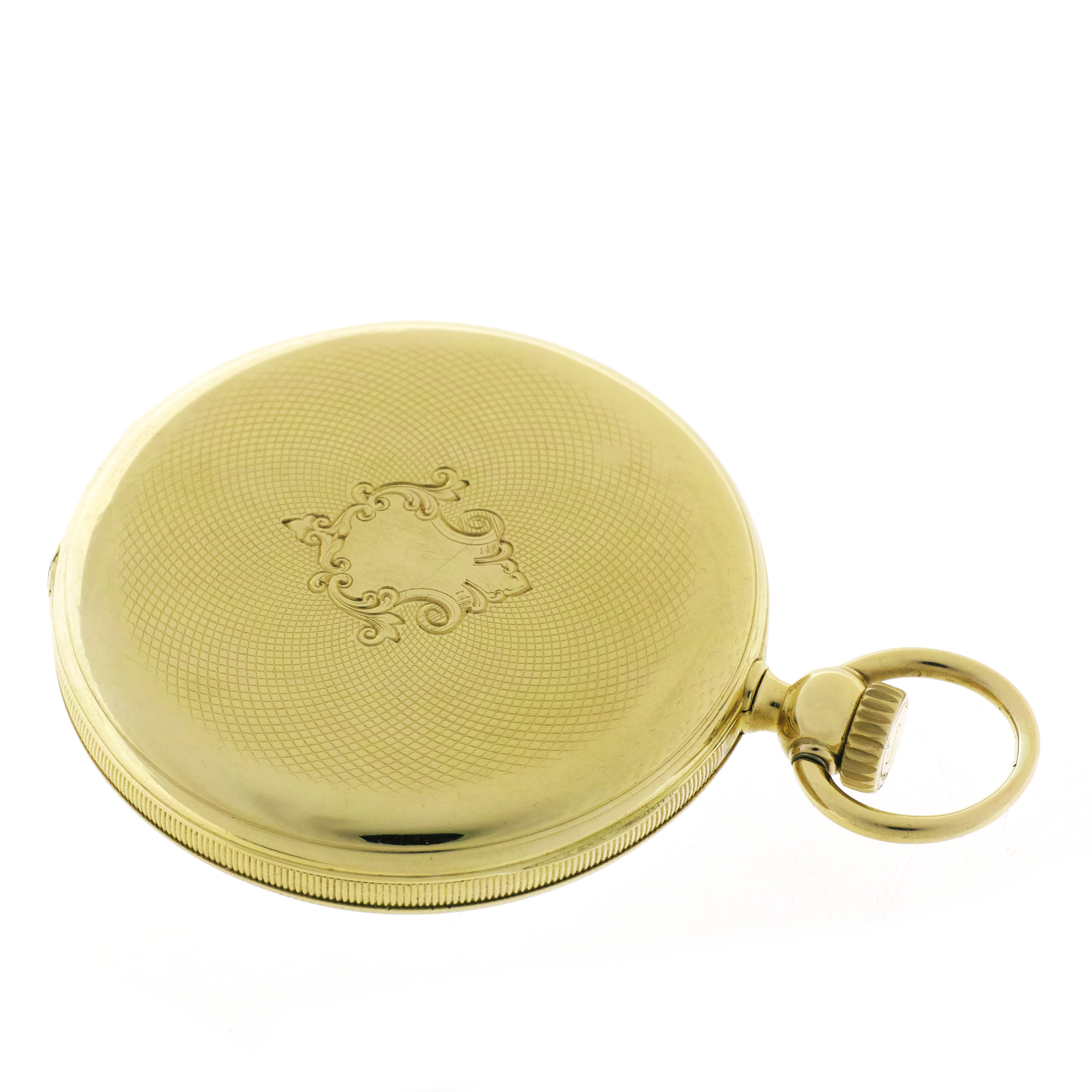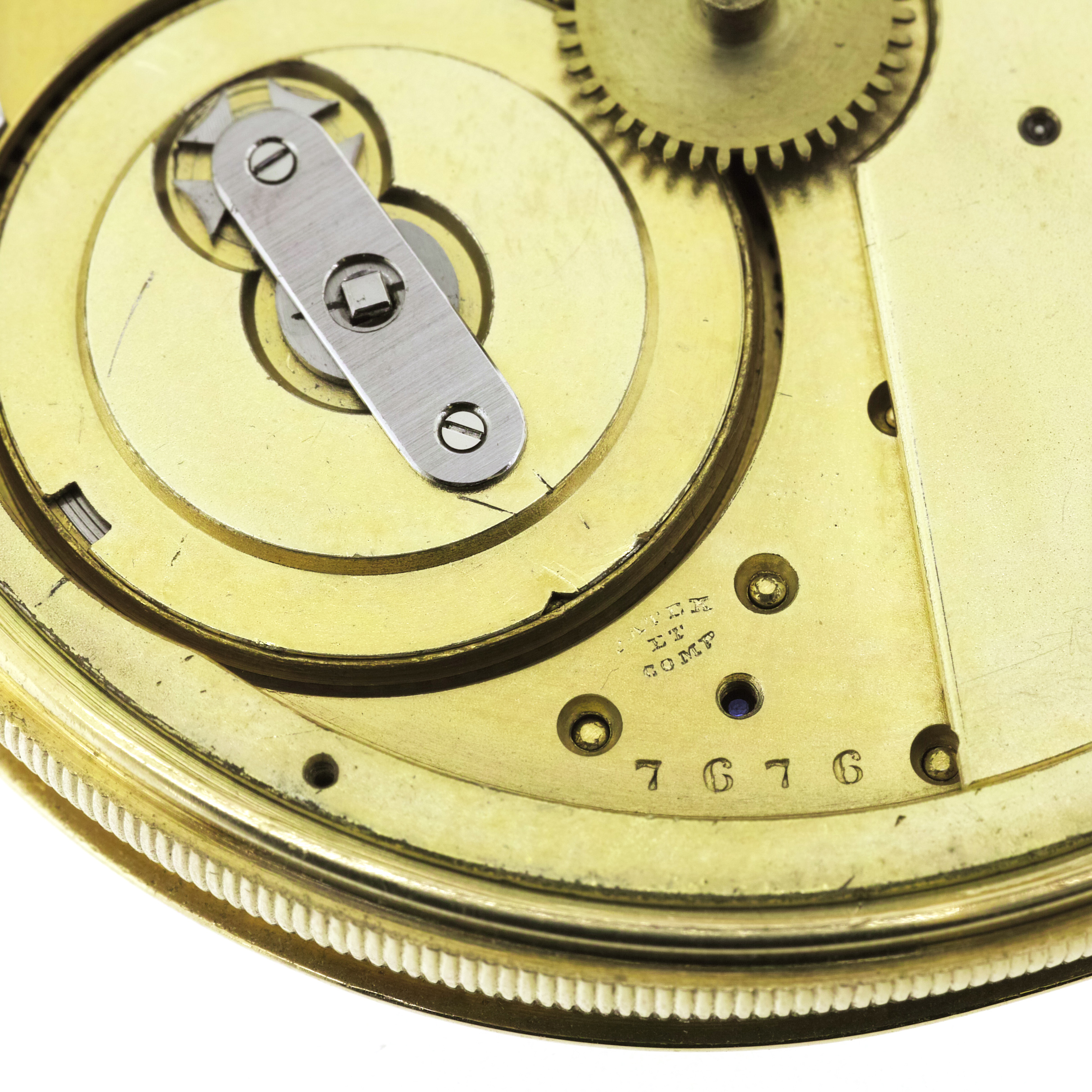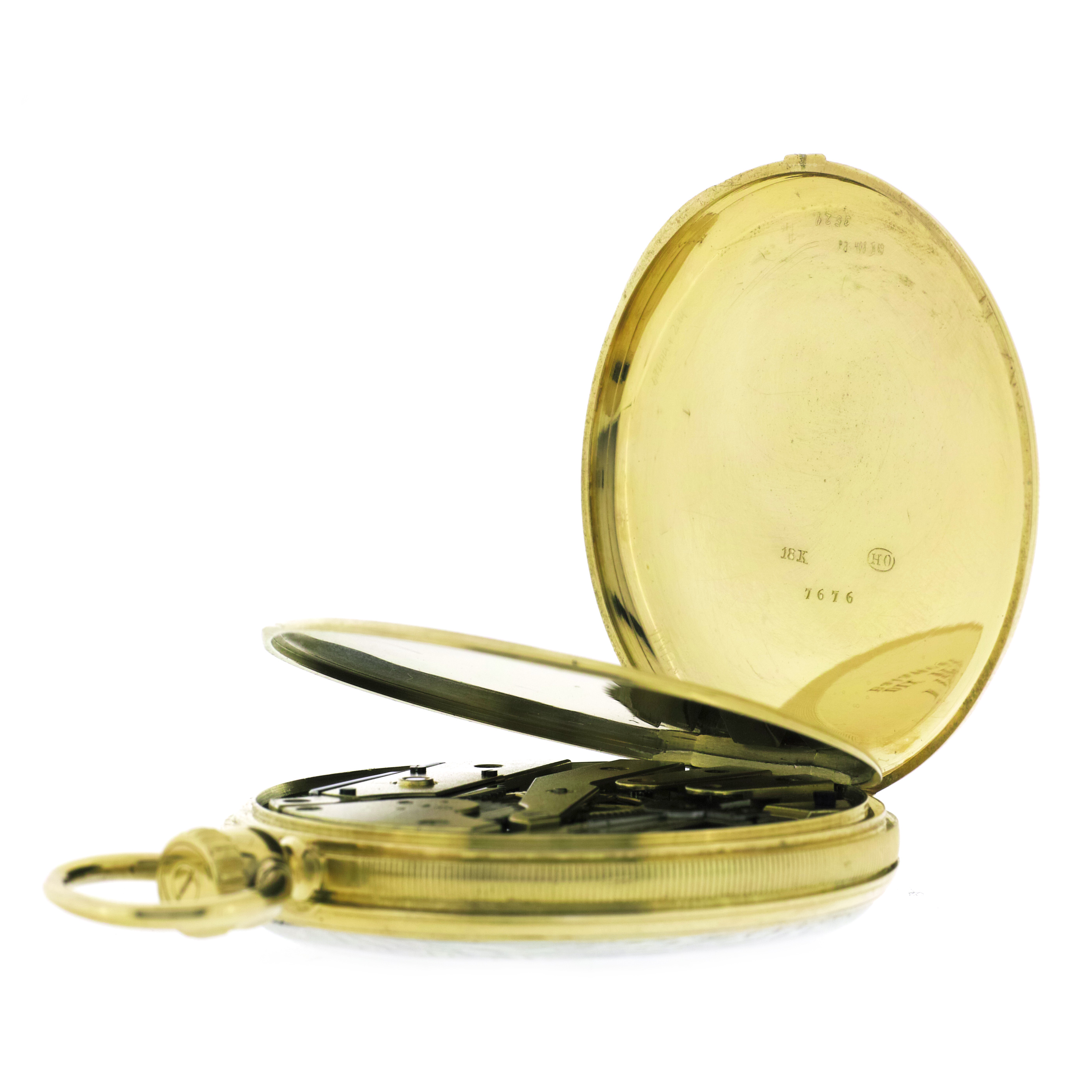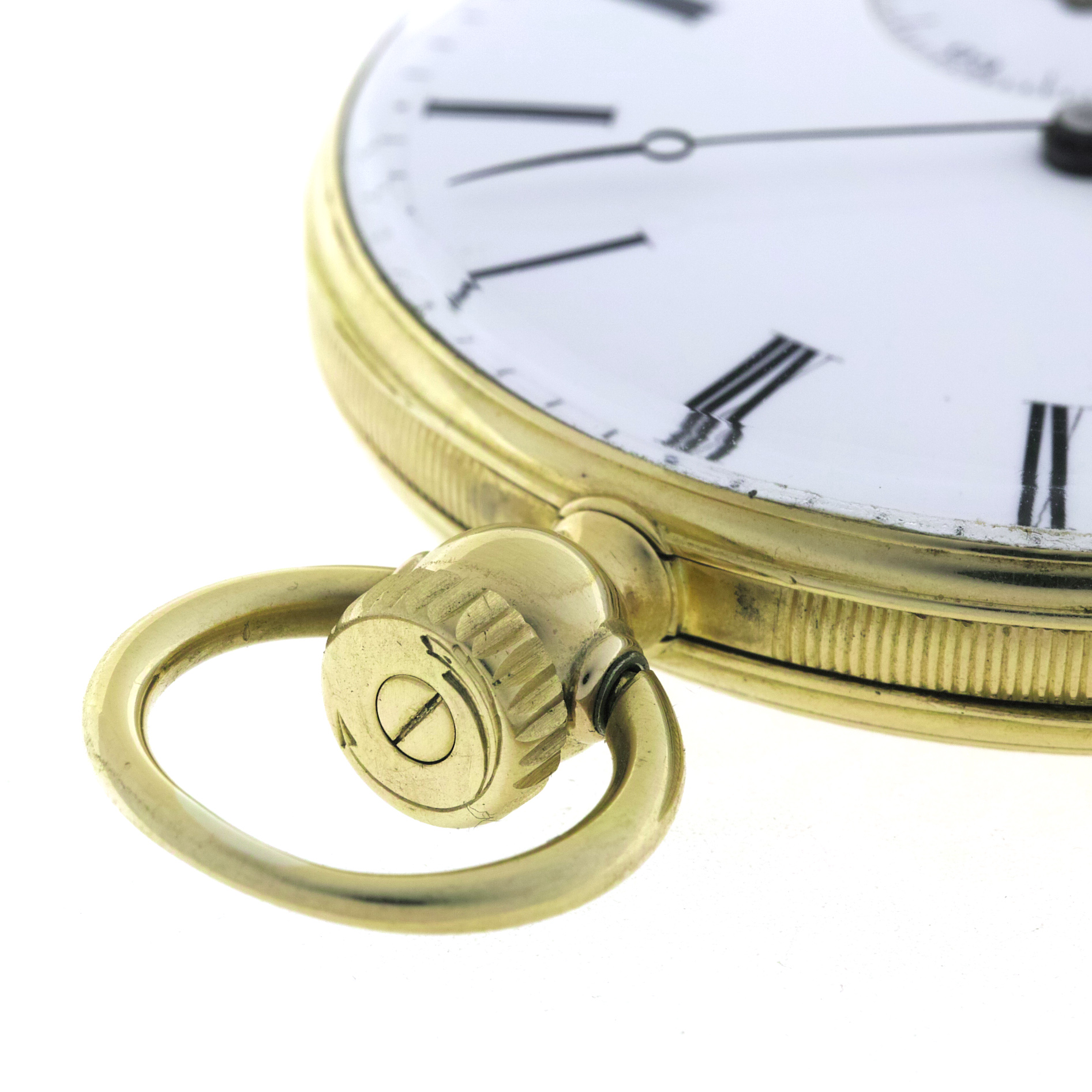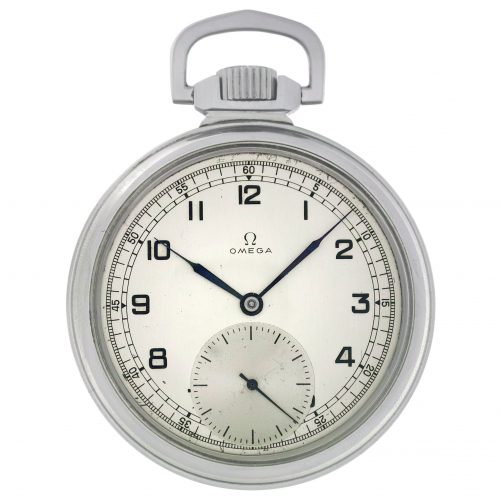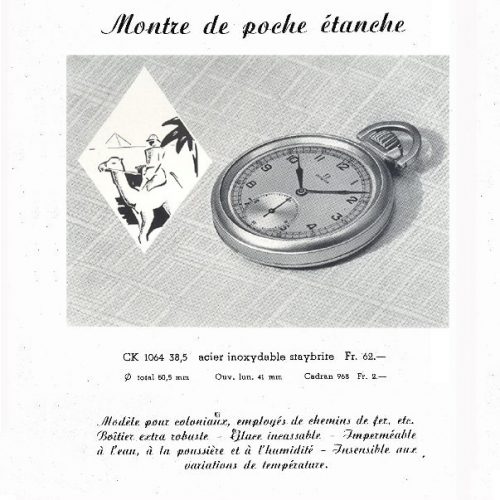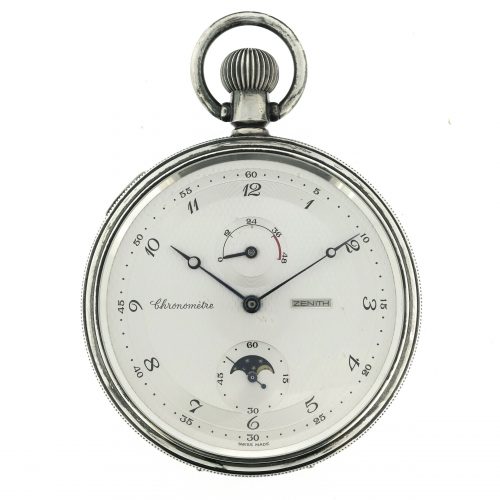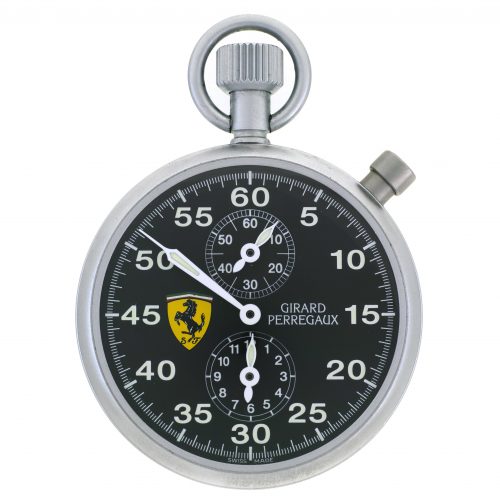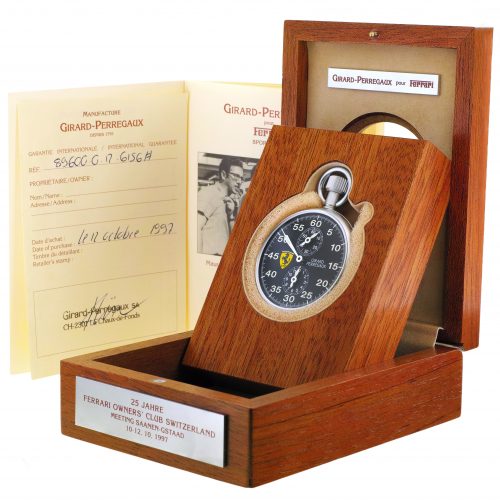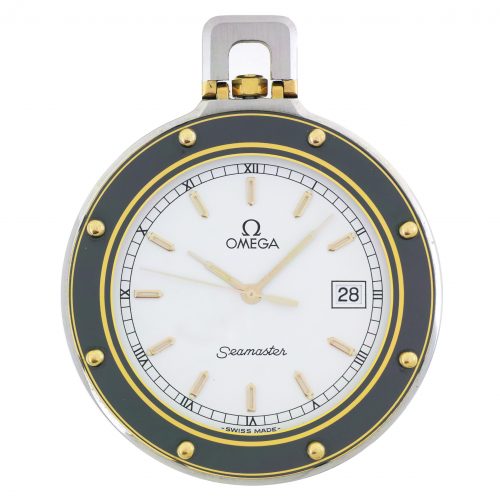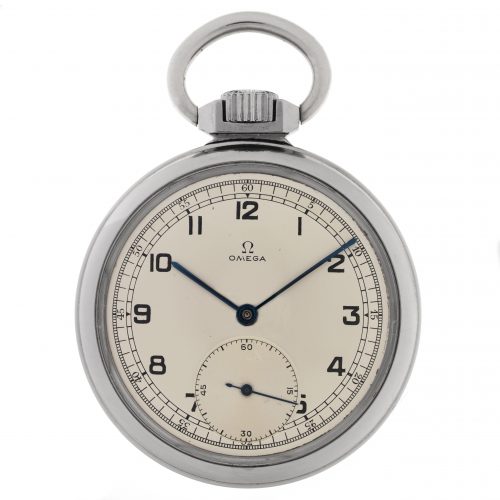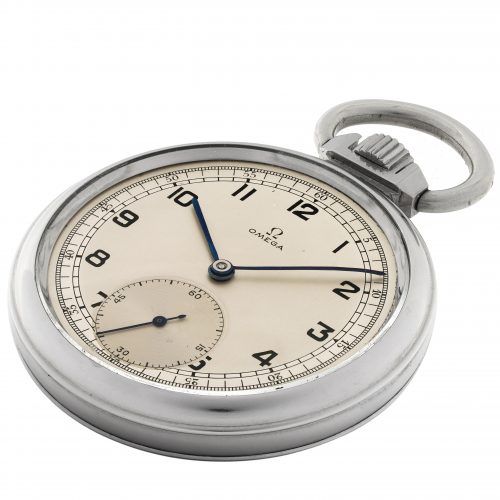Very rare and historically important fine early 18K gold open-face keyless lever Patek Philippe pocket watch with Adrien Philippe’s early stem winding and setting mechanism (with crown winding in one direction only, large crown engraved with an arrow to indicate the correct direction for winding of the movement).
Signed “Invention Brevetée de Patek Philippe & Co. à Genève, No. 7676″, manufactured in 1853. Cal. 18”’ gilt-finished jewelled lever movement, large bimetallic compensation balance, wolf’s tooth winding, gold cuvette with engine-turned border, white enamel dial, Roman numerals, eccentric subsidiary seconds, engine-turned circular case, case numbered, cuvette signed and numbered, movement signed (PATEK ET COMP) and numbered underneath the dial. Dimension 45 mm. diameter.
Adrien Philippe’s Keyless Winding and Setting System (quote from Christie’s)
Until the mid-19th century, pocket watches were wound and set with a key fitted into holes either in the case or dial. Through these holes, dirt could penetrate the movements or the keys were lost. For nearly 250 years, watchmakers had not found a practical solution to these problems.
In the early 1840s, Adrien Philippe introduced special features no other watchmaker could offer, thus stimulating the newly created firm’s business. His invention was initially greeted with skepticism by fellow watchmakers. The breakthrough finally came at the Paris Exhibition of 1844 in form of a gold medal for his very slim stem-wound watches displayed and, perhaps even more importantly, making the acquaintance of Antoine Norbert de Patek who immediately recognized Adrien Philippe’s visionary system as much more than just another technical gimmick. Patek already had several years of experience with the sale of stem-wound watches, produced by Patek & Czapek with Louis Audemars’ system since 1839.
Adrien Philippe’s invention of the modern winding and setting stem and crown (pull out to set, push in to wind), French patent No. 1317 of 1845, was more than a clever mechanism. It changed the nature of watches and allowed the evolution from the keyless watch to today’s waterproof wristwatch. Philippe continued the development and perfection of crown and stem winding and setting for almost 20 years. By the time he filed his final patent on the matter in France in 1861 (as the only official patent office was in Paris at that time), the first had already expired and his idea was in current use. Adrien Philippe had wished that his invention would be “applicable to all types of watches” and indeed, his system is used to this day in timepieces that he would probably never have imagined: self-winding and ultra-thin wristwatches, quartz watches, diver’s watches.
Watch is in overall good condition, running and ready to use!





